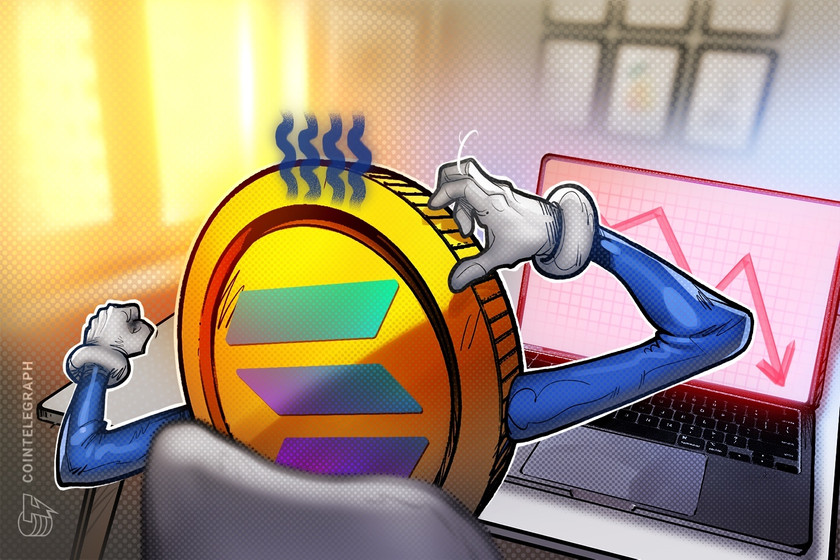3 reasons why Quant Network’s QNT token may have topped after 450% gains since June


QNT whales have started securing profits after the token’s 450%-plus price rally since June 2022.
The price of Quant Network (QNT) eyes a sharp reversal after an impressive 450% rally in the past four months.
QNT’s downside outlook takes cues from a flurry of technical and on-chain indicators, all suggesting that investors who backed its price rally have likely reached the point of exhaustion.


Here are three reasons why it could be happening.
Quant’s daily active addresses drop
Interestingly, the period of QNT’s massive uptrend coincided with similar upticks in its number of daily active addresses (DAA). This metric represents the number of unique addresses active on the network as a sender or receiver.
As of Oct. 17, the Quant Network’s DAA reached an all-time high of 10,949, up from around 5,850 four months ago, data from Santiment shows. Its upsurge during the QNT price uptrend shows traders were net buyers.
However, the DAA readings dropped sharply in the past two days, reaching nearly 6,800 on Oct. 19. Simultaneously, QNT’s price fell by 25.5% to $171 in the same period, suggesting that many traders have been securing their profits.


QNT price downside target
The profit-taking in the Quant Network market comes as its daily relative strength index (RSI) crossed above 70 on Oct. 17, hinting that the asset is overbought.
An overbought RSI does not necessarily mean a strong bearish reversal, however. Instead, it shows that the price has moved upward too quickly and, thus, a correction is becoming increasingly likely before the uptrend could resume.
QNT’s daily RSI corrected to 65 on Oct. 17. Simultaneously, the token’s price dropped toward $185, coinciding with its 0.236 Fib line of the Fibonacci retracement graph shown in the chart below.


The $185-level was instrumental as support in August 2021. But, given the existing profit-taking sentiment, the level may not hold for long, which could result in an extended decline toward the $137-$150 support range.
The area falls between QNT’s 0.382 and 0.5 Fib lines and further coincides with its 50-day exponential moving average (50-day EMA; the red wave in the chart above), creating a strong support confluence. Therefore, a break below $185 could have QNT bears eye $137, a 25% drop, as the ultimate downside target by the end of the month.
QNT whales diminish
The period of Quant Network’s 450% price rally heavily coincided with the increase in the number of addresses holding between 100 QNT and 1,000 QNT tokens, dubbed as “whales” by Santiment.
Related: Institutions ‘moving very, very fast’ into Crypto — Coinbase exec
However, the whale count started dropping on Oct. 16, a day before QNT’s price and DAA topped out. Meanwhile, addresses holding between 1,000 QNT and 10,000 QNT tokens also fell, suggesting that the plunge in the 100-1,000 QNT cohort was due to token distribution, not accumulation.


In other words, QNT whales have started selling their holdings near the token’s potential price top, raising possibilities that the decline could continue toward the technical targets, as mentioned above.
The views and opinions expressed here are solely those of the author and do not necessarily reflect the views of Cointelegraph.com. Every investment and trading move involves risk, you should conduct your own research when making a decision.






































